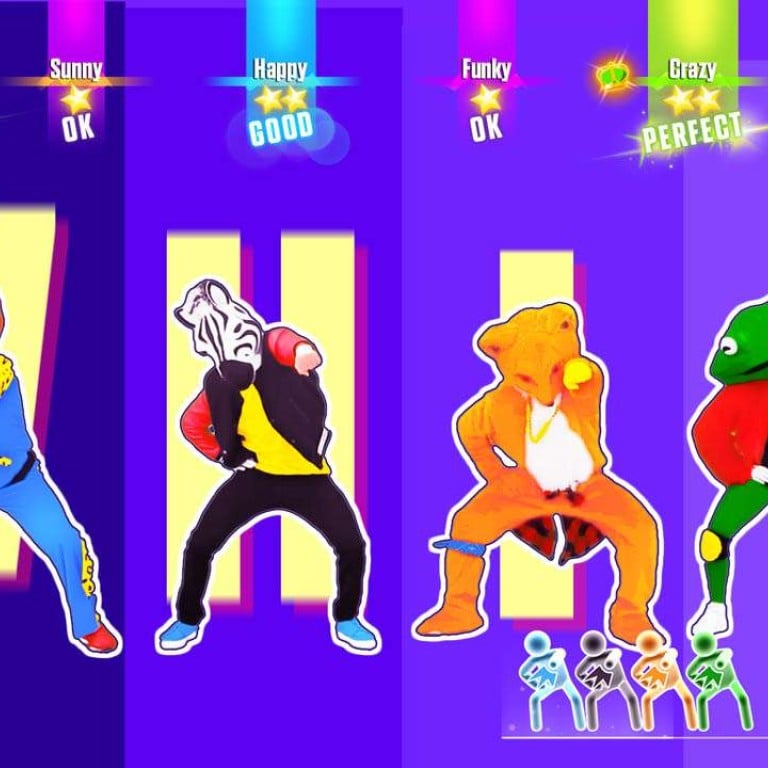
Review | Game review: Just Dance 2017 is as baffling as ever, even if it does get you dancing
While it’s functional and includes a decent smattering of songs to dance to, there are tracking issues with game meant to teach you dance moves, and some of the design is bizarre
Ubisoft
2.5 stars
Just Dance is a baffling series and Just Dance 2017 is no different. It’s always been available on consoles that have never quite nailed full-body tracking (the Wii comes to mind).
When it made its debut via the Xbox’s Kinect peripheral, the game improved slightly with the ability to include your entire body in the mix. But the new iteration for the Nintendo Switch feels as crippled as ever, with a release that didn’t really seem as though it had a legitimate reason to be made other than to cash in on the fact that Nintendo has released a new console.
While it’s functional and includes a decent smattering of songs to dance to, there are also tracking issues, some bizarre design decisions, and the general question of “why does this exist when there’s better technology to play it on?” Despite all of this, I just danced.
In Just Dance 2017, you gather some friends (or play by yourself), pick a track, and follow the dancer onscreen as they perform a dance routine. At the bottom corner of the screen you’ll see the prompts you’re meant to follow in time with the star dancer, silhouetted colourfully against the screen.
The prompts come fast and furious, but each step is generally repeated a couple of times for you to get the hang of things. You’ll earn points if you perform well enough, and, depending on what mode you play in, you’ll either come out a winner or you’ll amass currency with which you can unlock additional songs.
Playing your standard “Just Dance” mode is the easiest way to get started, and you’re told you only need one to participate, or you can opt to download the “Just Dance” app and play along with your smartphone. The Switch’s Joy-Con is the optimal control method here as it comes with the wrist strap so you’re not one flail away from sending the Joy-Con (or your phone) through the TV. It’s also responsible for smoother input and improved tracking, if you can indeed call what Just Dance 2017 (and the series in its entirety) tracking.
You use one Joy-Con apiece to play, or as previously stated, your smartphone, equipped with the “Just Dance” app. This isn’t new to the series, but it’s beyond me (unless you don’t have enough Joy-Con controllers) why you’d want to use the app instead of the controllers that came with the sweet new console you just bought. In any case, however, tracking is a major issue here. Yes, the Joy-Con will measure your movements, but only those relegated to the positioning of your arm.
For example, I was gung ho about testing Just Dance 2017 and threw myself into routines, doing my best to mimic the dancers. I played my heart out. So imagine my surprise when I realised that while sitting I could perform just as well as long as I went along with the arm movements for each step. And by going along with the movements, I mean lazily waving my arms around and completely missing other steps.
The Joy-Con simply isn’t able to figure out if you’re moving your lower body or even if you’re right on the money. That’s not the Joy-Cons’ fault, however, nor has it been the Wii’s fault or your smartphone’s fault. That’s the limitations of the tech, which has always been such that you can flail about like a fish and still perform reasonably well, receiving positive rankings by the end of the song.

This is very much a game for casual audiences, and people I’d wager who would never actually want their dance moves scored. That’s why Ubisoft was able to get by with including only a paltry 40-something songs, many of which include some of the most boring pop hits I could imagine, such as Maroon 5’s Don’t Wanna Know and the worst Hatsune Miku song of all time, PoPiPo.
That’s where Just Dance Unlimited comes in, Ubisoft’s push for a subscription service with additional songs you can pay to use in your game. It’s US$4.99 a month, US$9.99 for three months, and US$29.99 for the entire year if you want access to 200-plus additional songs. Locking additional songs behind a paywall like this is understandable for the ecosystem of Just Dance going forward, but for a game that hardly scores you on your performance, to the point where you could look up videos of each song on YouTube and get a similar effect, is a bit shameless.
For one of the earliest Nintendo Switch games, Just Dance 2017 is disappointing. There’s little substance here, certainly not enough to recommend shelling out cash for Just Dance Unlimited or even playing this game instead of just turning on the radio and dancing to your own routines.
It will likely please casual fans who don’t know any better, but if you really want to learn how to dance wait for the inevitable full-body VR trainer or just roll it on back to Dance Central, the undisputed dance trainer of the previous decade. You’ll learn a lot more, and it’s still great at parties.

